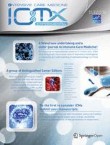Different distances between central venous catheter tips can affect antibiotic clearance during continuous renal replacement therapy
The aim of this experimental study was to elucidate whether different distances between central venous catheter tips can affect drug clearance during continuous renal replacement therapy (CRRT). Central venous...


